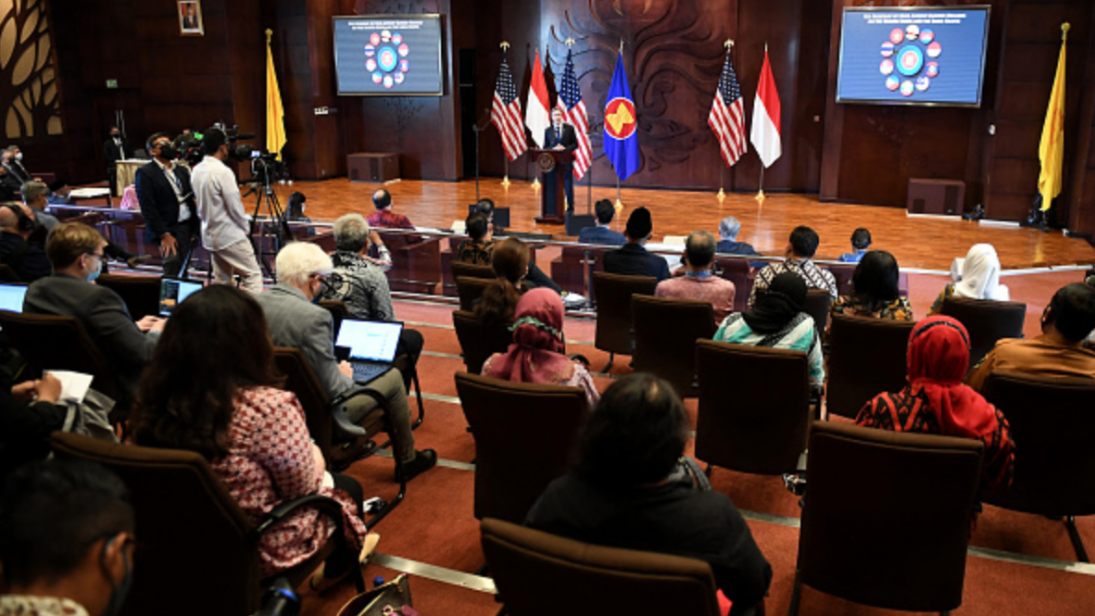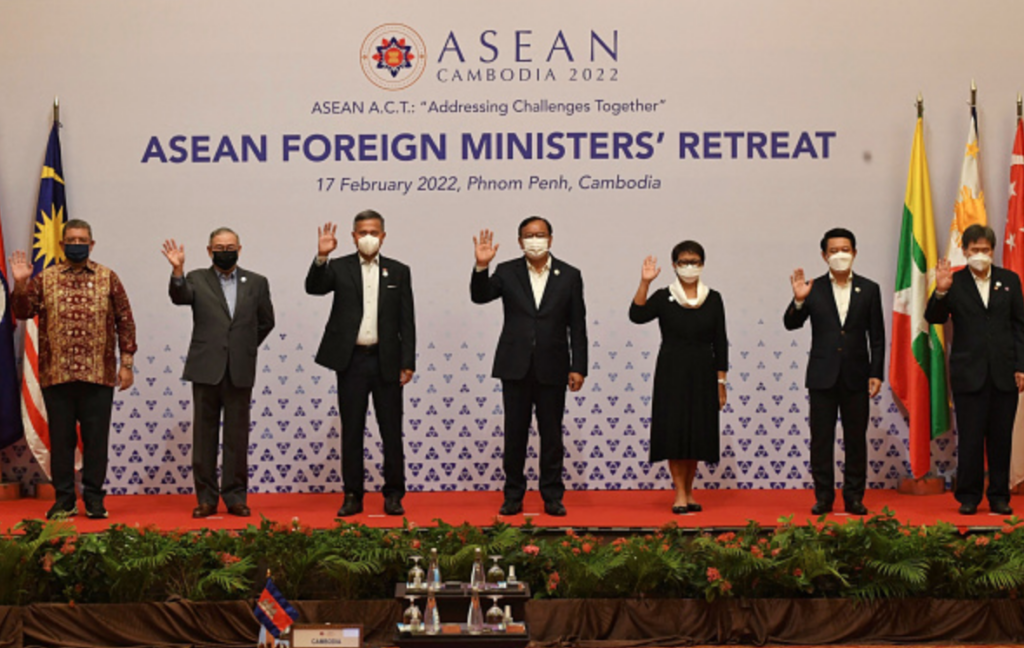
Few would disagree that the term “Indo-Pacific” has now found a front-and-center place in diplomatic lexicon and geo-strategic thinking across regional and extra-regional countries, almost replacing the longstanding “Asia-Pacific” conceptualization of the region. The intellectual roots of the term can be traced back to the 1920s, but its revival—driven largely by United States in contemporary times—took place against a very specific background: the not-so-friendly rise of China. The contested interpretation of the term reveals how each country views this geographic space through the lens of their national interest, indicating how deeply political the term is. This of course is neither surprising, nor new in the anarchic world of international politics, where “it is better to be Godzilla than Bambi.” However, in Washington’s Indo-Pacific discourse, the conflation of a geographical space with a “strategy” primarily directed against China has only served to alienate, rather than unite, regional countries.
U.S. foreign policy bureaucracy has struggled with defining Asia in a manner that best reflects its interests in the region, reflected in its changing labels for the region—Asia-Pacific and now Indo-Pacific. A look into the United States’s post-World War II planning in the region enables us to see a thread of continuity across these conceptualizations: the desire of control over potential adversaries that could reduce U.S. influence in the region. While this may have been suitable during the Cold War—when the region was divided into two distinct camps—its contemporary conceptualization reflects how policymakers fail to acknowledge the transformation of regional actors, most of whom are more inclined to multipolarity than great-power competition. Although the normative rational for Washington’s “free and open Indo-Pacific” espouses exactly this—a multipolar region where no one power can dominate—by placing China at the core of its “strategy,” the United States may fall to the failures of the Cold-War era great-power conflict trap.
Washington’s Official Discourse on the Indo-Pacific
Although official rhetoric about the Indo-Pacific began during the Barack Obama administration—particularly as officials described relations with Australia and India—it came to dominate the United States’ approach to Asia under the Trump administration. In 2017, Donald Trump announced his “Indo-Pacific dream,” where he called upon countries to choose a free and open region. This was quickly adopted as a strategy in National Security Strategies and the National Defense Strategies, released in 2017 and 2018 respectively. Both documents took a harsh stance on China’s role in the region, explicitly acknowledging it as a strategic competitor, and asserted that countering China in the Indo-Pacific would become a cornerstone of U.S. strategy. In 2018, Trump renamed America’s oldest and largest military command, the Pacific Command, the Indo-Pacific Command, a symbolic gesture reflecting U.S. military priorities in the region.
By placing China at the core of its “strategy,” the United States may fall to the failures of the Cold-War era great-power narrative trap.
As a part of Washington’s overall competitive strategy vis-à-vis China, the U.S. Department of Defense released its first ever Indo-Pacific Strategy in 2019, clearly identifying China as a revisionist power out to erode the rules-based order in the region. Any illusions that the administration’s view of the region was not motivated by a desire to limit Chinese influence in the region was clarified in U.S. Strategic Framework for the Indo-Pacific, a classified planning document from February 2018, which lists “preventing China from establishing new, illiberal spheres of influence” as Washington’s top national security challenge in the region. President Biden has stayed on course with his predecessor’s approach towards the Indo-Pacific, evident in the 2022 Indo-Pacific Strategy, which acknowledges “mounting challenges…from the PRC” as a reason for “intensifying American focus” on the region.
The result of such a myopic focus on China in a wide and diverse region reveals U.S. ignorance of the region’s complexity and historical dynamics. U.S. strategies fail to account for the strong social, economic, political and civilizational ties which bind the countries in the region together. China-prescribed Indo-Pacific strategic thinking fails to acknowledge the transformation of the region since the end of Cold War, where actors in the region are no longer passive recipients of a reshaping regional order, but active participants. Despite Washington’s insistence on the need for cooperation with democratic partners to build a rules-based order, it fails to acknowledge that a “with or without us” approach is ill-suited for the region.

United States in Asia: From Asia-Pacific to Indo-Pacific
The force and logic of regional constructs becomes explicit when one examines the historical forces it emerged from and the actors involved. In the past, the United States promoted Asia-Pacific regionalism over Pan-Asianism—evident from its support for APEC but rejection of EAEC—because the latter is restricted to Asians and associated with Asian values and cultures. Washington managed this through its power projection capabilities built through the hub and spokes alliance system, through what John Ikenberry characterized as “hard bilateral security ties and soft multilateral economic relations.” The U.S. response to the dichotomy emerging from the growth of an exclusive East Asian regionalism in the aftermath of the Asian financial crisis was to incorporate East Asia into a wider “Pacific community.” The production of the “Pacific” as a region was the result of Euro-American attempts to expand their economy, structuring the region with their “own economic and political logic.”
Although the United States remains a predominant actor in Asia, due to its economic influence and security presence in the region, it has faced challenges to its position since the 2008 financial crisis. The erosion of U.S. power in the region, most evident in the gradual sidelining of APEC, is challenged by both the increasing influence of China’s regional power and rising exclusivist pan-Asianist sentiments. The visible limits of an Asia-Pacific regional construct led Washington to expand the area of governance to Indo-Pacific, which now links East Asia and Indian Ocean, to project the region as a space where “like-minded democracies”—both Asian and Western—work together to prevent the hegemony of any one power.
ASEAN as an Alternative to Great-Power Conflict
ASEAN-led inclusive, institutionalized regionalism neither excludes the United States nor supports Chinese hegemony; rather it treats both as “dialogue partners” instead of leaders or norm-setters. China is undoubtedly at the center of regional countries post-Cold war security considerations, and countries fear losing their sovereignty to Beijing’s economic and military power. But for these states, the answer is not further entanglement in great-power competition.
ASEAN-led inclusive, institutionalized regionalism neither excludes the United States nor supports Chinese hegemony; rather it treats both as “dialogue partners” instead of leaders or norm-setters.
ASEAN was established primarily to address the shared concern of external interference. The experience of ASEAN-led regionalism exhibits how trade and production networks have driven collective efforts, rather than security considerations. In its current narrative, Washington’s repeated iteration of liberal, democratic, rules-based order is a thinly veiled targeted attack on China and raises apprehension among Southeast Asian countries: supporting the discourse is equated with challenging China. Moreover, the underlying assumption of a rules based order—despite its attractive normative value—is the existence of a morally superior, universal order in the region, which goes against ground realities in the region.
America’s Indo-Pacific strategy espouses a regional order which comes across as exclusivist, ill-suited for a region which does not subscribe to an exclusionary vision of regional order, irrespective of which great-power is propagating it. The militant rise of China is undoubtedly a challenge for Washington, but the answer is not a zero-sum competition, at the expense of alienating its Asian partners.
***
Image 1: Oliver Douliery/AFP via Getty Images


